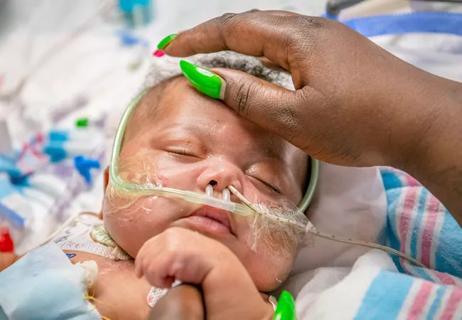Large, multinational trial finds no significant difference in vigorous versus nonvigorous exercise

Just over a decade ago, conventional cardiology advice would have precluded patients with congenital long QT syndrome (LQTS) from participating in sports out of concern for a life-threatening arrhythmia. However, mounting data, including those from a recent multinational prospective trial, support a pivot away from this guidance.
Advertisement
Cleveland Clinic is a non-profit academic medical center. Advertising on our site helps support our mission. We do not endorse non-Cleveland Clinic products or services. Policy
The authors of this study, published in Circulation, found no appreciable difference in cardiac event rates among study participants with phenotypic and/or genotypic LQTS who were engaging in low or vigorous exercise.
"Sports participation was really viewed as a risk to these patients about 15 years ago," explains Peter Aziz, MD, Director of the Inherited Arrhythmia Clinic at Cleveland Clinic and one of the study's coauthors.
This no-exposure approach was standard for decades until clinicians noticed that most treated patients were not experiencing activity-induced arrhythmias. Two high-volume centers in the U.S. published retrospective studies around 2010 highlighting institutional experiences showing favorable LQTS-associated cardiac outcomes in the setting of sports participation.
These findings helped usher in a new awareness within the discipline that, despite well-founded concern, patients might be able to engage safely in competitive sports with the appropriate precautions. This evidence provided the basis for the prospective, observational trial known as the LIVE-LQTS (Lifestyle and Exercise in the Long QT Syndrome) study.
Researchers of the LIVE-LQTS enrolled 1,413 patients from 2015 to 2019 across 37 high-volume LQTS centers in the U.S., United Kingdom, Canada, Australia and New Zealand. Ages ranged from 8 to 60 with phenotypic and/or genotypic LQTS. Study participants (or their parents) were administered surveys that captured physical activities and clinical events every six months for three years. They established three activity cohorts with these data: sedentary, moderate-intensity exercise and vigorous-intensity exercise.
Advertisement
The authors found that 52% (N=737) engaged in vigorous exercise—and more than half (55%) were competitive athletes. According to the researchers, LQTS-triggered events were low throughout the three-year follow-up. Only 2.6% of those exercising vigorously and 2.7% exercising nonvigorously (sedentary and moderate) experienced an event.
The unadjusted hazard ratio for experience of events for the vigorous group compared with the non-vigorous group was 0.97 (90% CI, 0.57–1.67), with an adjusted hazard ratio of 1.17 (90% CI, 0.67–2.04), note the authors in the report.
While not surprising, Dr. Aziz adds that the results were reassuring and add meaningful evidence to the literature, enhancing the conversation with patients and families.
"We used to quote the data and say, 'This is what we know, and these are the data we have. We believe restricting kids from sports participation is more harmful than beneficial.' But now we can take comfort in the evidence from a large, well-powered study to feel confident making this recommendation."
Sports participation has many identity-forming and social-developmental components for kids. The cost of not engaging in physical activity can be high for some kids, with potential unintended consequences, including low self-worth and/or depression.
Were the previous LQTS guidelines on sports participation too conservative? Not exactly. Says Dr. Aziz, "The event rates were much higher 30 years ago and are much lower now because we better understand screening and treatment. We're identifying patients with LQTS before they become symptomatic, so the severity of the disease has decreased, even though nothing about the disease has really changed."
Advertisement
It's now well-established that there are three major LQTS subtypes, each caused by a different gene variant and with different symptom and complication profiles. "We now know that patients with LQT1 are more vulnerable to experiencing arrhythmic events and, more specifically, life-threatening arrhythmias during times of exertion or exercise," says Dr. Aziz. "We also now know that beta-blockers, a first-line therapy for LQTS, are incredibly effective at reducing arrhythmic events, particularly in LQT1. Implantable devices and sympathetic denervation surgery can also be effective treatment strategies to prevent a life-threatening arrhythmia in the higher risk patient."
Sports participation and vigorous activity are still a conversation for the patient, their parents or caregivers, and the cardiologist. Many experts are hopeful this adds ease to clinical decision making that sounds much different today than it did decades ago when complete restriction would be the most straightforward, risk-averse advice.
"A harder thing to do is to say, 'You can play, but let's figure out how to make it safe for you.' It's our job to save lives, but it's also our job to advocate for our patients and improve their quality of life, and that’s what we aimed to do in this study,” concludes Dr. Aziz.
Advertisement
Advertisement

Cardiac imaging substudy is the latest paper originating from the VANISH trial

Large registry study explores association between statin use and long-term outcomes

Infant with complex congenital heart anomalies thriving after biventricular circulation is restored

4-D imaging informs complex aortic valve repair in adult and pediatric patients

Increased demand for care has led to expanded pediatric cardiology services

Experts are challenging the one-size-fits-all paradigm

Consortium makes key recommendations to improve prevention practices

Retrospective study examines outcomes associated with common treatment pathways